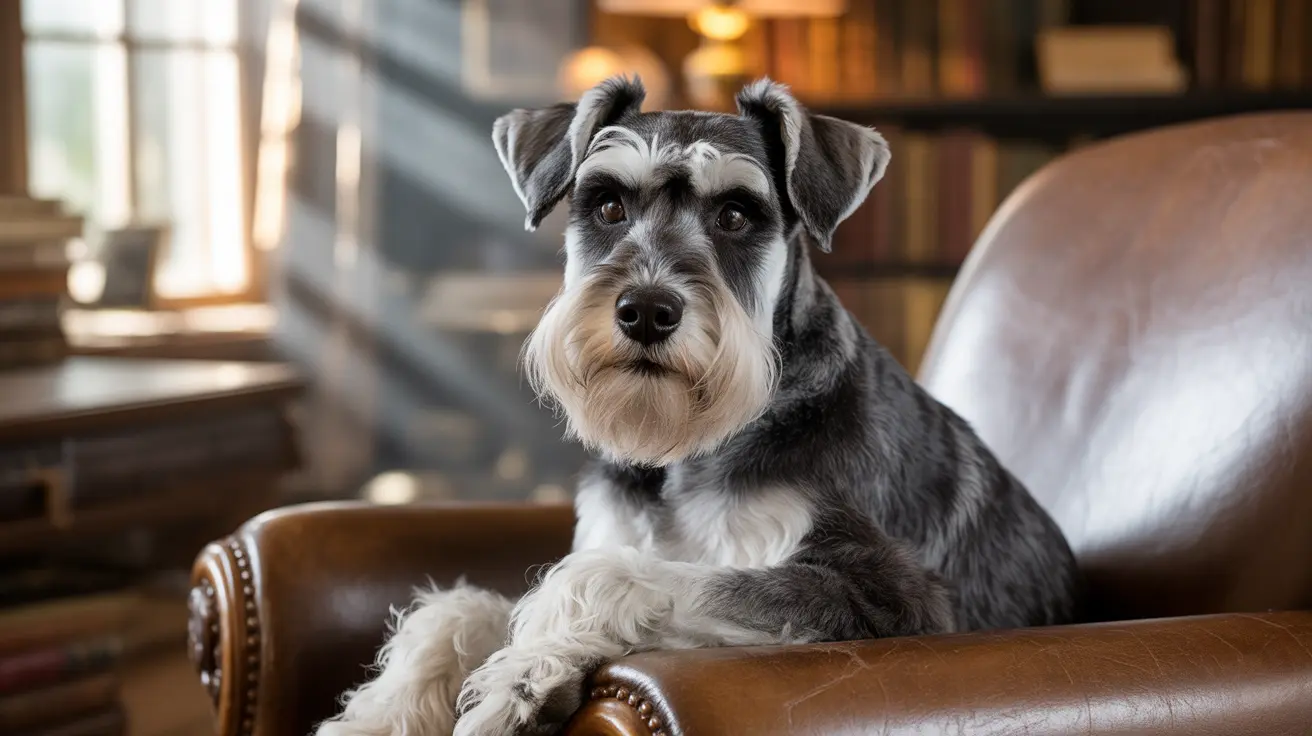Normal Age-Related Graying in Dogs
Most dogs begin showing their first gray hairs between 5 and 8 years of age. This natural aging process typically starts around the muzzle and gradually extends to other areas of the face, particularly around the eyes and eyebrows. The timing can vary significantly based on your dog's size, breed, and genetic makeup.
Small breeds tend to gray later, often not showing significant signs until 7 years or older. In contrast, larger breeds may begin graying as early as 5 years of age, which aligns with their generally shorter lifespans and earlier entry into senior status.
Premature Graying: Causes and Concerns
Some dogs experience premature graying, showing silver strands as early as 1-4 years of age. This early graying can be attributed to several factors:
- Genetics (especially in breeds like Poodles and Bearded Collies)
- Chronic stress and anxiety
- Potential underlying health conditions
- Environmental factors
If your dog shows significant graying before age 5, particularly if accompanied by other symptoms like lethargy or weight changes, it's worth consulting with your veterinarian to rule out any health concerns.
Breed-Specific Graying Patterns
Certain dog breeds are more prone to early or distinctive graying patterns:
- Schnauzers (natural gray facial furnishings)
- Poodles (progressive graying gene)
- Bearded Collies
- Weimaraners
- Various sheepdog breeds
These breeds may show gray hair earlier or in specific patterns due to genetic predisposition, which is entirely normal and not a cause for concern.
The Impact of Stress on Graying
Research has shown a strong correlation between stress levels and premature graying in dogs. Signs of stress that might accompany early graying include:
- Excessive pacing or restlessness
- Changes in appetite
- Increased anxiety in normal situations
- Behavioral changes
Managing your dog's stress through proper exercise, mental stimulation, and sometimes professional behavioral support can help maintain their overall well-being, though it won't reverse existing gray hairs.
Supporting Your Graying Dog
While graying is a natural process that can't be prevented, you can support your dog's health as they age:
- Maintain regular veterinary check-ups
- Provide appropriate exercise for their age and ability
- Ensure proper nutrition
- Address any anxiety or stress issues
- Keep them mentally stimulated with puzzles and games
Frequently Asked Questions
At what age do dogs usually start getting gray hair around their muzzle?
Most dogs typically start showing gray hair around their muzzle between 5 and 8 years of age, though this can vary significantly based on breed and size.
Can stress or anxiety cause my dog to go gray before the typical age?
Yes, research has shown that dogs experiencing chronic stress or anxiety may develop gray hair earlier than expected, sometimes as young as 1-4 years of age.
Which dog breeds are more prone to early or premature graying?
Breeds like Poodles, Bearded Collies, Schnauzers, and various sheepdog breeds are genetically predisposed to earlier graying or specific graying patterns.
Is premature graying in dogs a sign of underlying health problems like hypothyroidism?
While premature graying alone isn't usually cause for concern, when accompanied by other symptoms like weight gain or lethargy, it could indicate conditions like hypothyroidism and should be evaluated by a veterinarian.
Why do larger dog breeds tend to show gray hair earlier than smaller breeds?
Larger breeds typically show gray hair earlier because they age more quickly overall, entering their senior years around 5-7 years of age compared to 7-10 years for smaller breeds.
Remember, while graying is a natural part of aging in dogs, any sudden changes in your pet's appearance or behavior should be discussed with your veterinarian to ensure optimal health and well-being.






